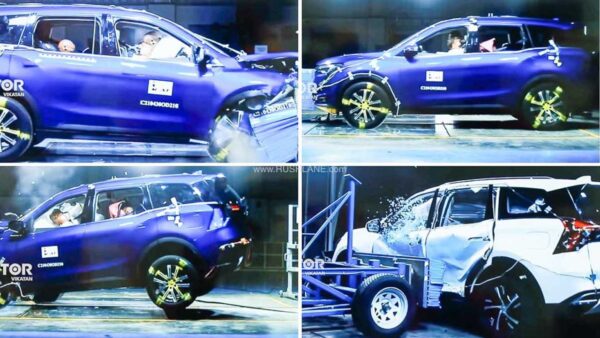
Mahindra is expected to reveal XUV700 Global NCAP crash test safety rating around the official launch
Mahindra just can’t get enough praise for making a truly world-class SUV in the form of the recently revealed XUV700. The SUV is considered to be an upcoming nightmare for its rivals and ticks almost every box needed for a vehicle of its class. The carmaker now has one more important box to tick which could prove to be icing on the cake.
The company expects the new XUV700 to do exceptionally well in the NCAP safety ratings as it strives hard to achieve excellence in this aspect. Mahindra is confident of XUV700 scoring well in Global NCAP crash test ratings. Their XUV300 is currently the safest made in India car with the highest Global NCAP safety rating and points.
Safety Features on offer
While the XUV700 SUV is yet to be crash-tested, it has already started to make the right noises regarding the car’s safety. As we know, XUV700 comes with a plethora of safety features including up to seven airbags, ABS with EBD, rear parking sensors, rear parking camera along a host of ADAS (Advanced Driver Assistant System) features that ensure the well-being of the onboarders. However, the key to safety is more reliant on the car’s structural integrity rather than the fancy gizmos on offer.
In a series of videos uploaded on YouTube by Motor Vikatan, safety structure of XUV700 is explained. The vlog reveals the process and different phases of development of the SUV’s safety. The initial stage of development consists of simulations of various kinds of crashes. For starters, the offset front impact is analyzed which shows that emphasis has been laid on how the front end absorbs an impact from a crash.
Simulation of various crash tests
The front end, like most other parts of the monocoque frame underpinning XUV700, is made of advanced high-strength steel (HSS). Hence, energy from the impact is absorbed which deforms the front engine bay and distributes the resultant load in a systematic manner so that it doesn’t lead to any intrusion to the front compartment and harm occupants.
Similarly, for the offset side impact simulation, intrusion-resistant materials are used in the side body panels to prevent intrusion into the passenger area. Side and curtain airbags further enhance protection. For impact towards the rear end, long members and cross members absorb impact energy. Long members behind the rear bumper bear maximum load from a crash which also prevents the impact energy from reaching the fuel tank.
Testing phase
Care has been taken so that the rear suspension setup also doesn’t intrude on the fuel tank which may otherwise cause a fire hazard. Hence, the suspension also absorbs some of the energy. The entire simulation analysis phase takes around nine to ten months.
Once the simulation phase was complete, a prototype had been created and the testing phase began. At the same time as physical testing, data from the virtual simulation testing was correlated with data from the actual tests. After completion of physical tests, the comprehensive safety performance was evaluated.

